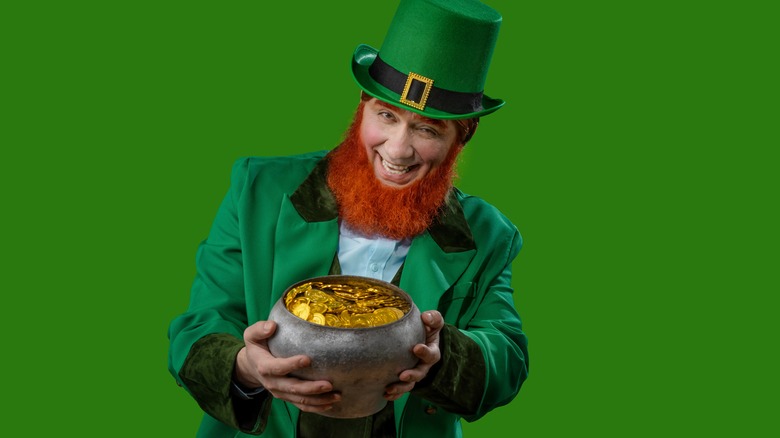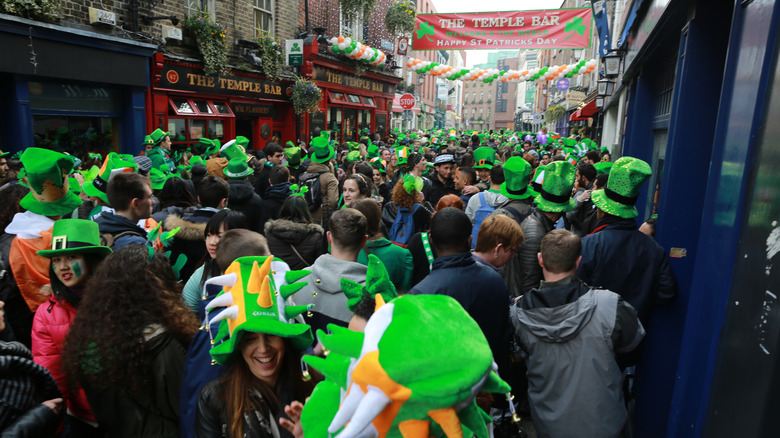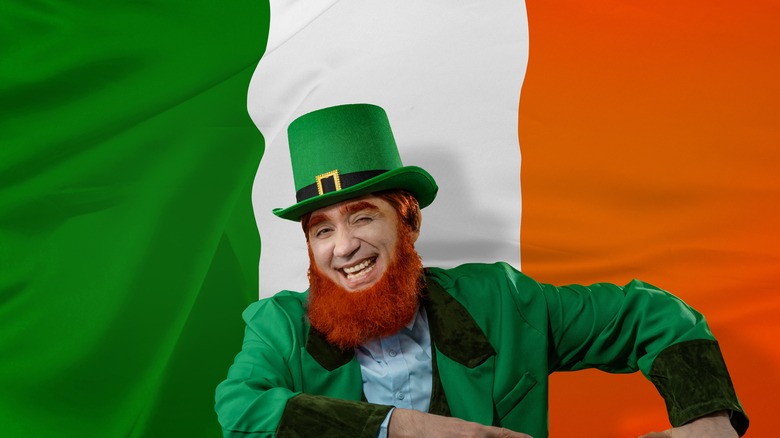Why Are Leprechauns Associated With St. Patrick's Day?
Most people know that St. Patrick's Day originated in Ireland, but not everything that people have come to associate with this holiday is reflective of its origins. What began as a religious holiday has expanded into more of an all-out Irish celebration all over the world, especially in the United States where Irish lineage is the second most common among the population — with German heritage being the first — according to The Washington Post. Modern celebrations now tie in multiple aspects of Irish culture.
St. Patrick is the patron saint of Ireland, yet his story is not crystal clear. According to Catholic Apostolate Center, he was born around 386 A.D. in Britain while it was under Roman rule. Irish pirates took him captive and sold him into slavery during his teen years, but ultimately he is credited with bringing Christianity to Ireland, which is why he became a subject of celebration. St. Patrick used natural and pagan symbolism in his Christian teachings, including the three-leaf clover — the shamrock — which he used to signify the Holy Trinity, which became part of his legend.
St. Patrick's Day gained popularity around the world
The Irish began celebrating the life of St. Patrick in the ninth or 10th century with a feast on what is believed to be his date of death, March 17th. The first parade for St. Patrick's Day was actually in the United States in 1601 when St. Augustine, Florida was under Spanish rule, according to History. In the decades after American Independence, Irish immigrants in the U.S. allowed for more Irish national pride to gain ground even before the Potato Famine of the mid-1800s brought nearly 1 million Irish Catholics to the U.S. This is when massive parades for the holiday began (via History). Over time, more of Ireland's culture would be included in the celebration, including that of the mythical leprechaun.
In Irish folklore, leprechauns are described as fairies in the form of small, elderly men who wear a "cocked hat and leather apron," per Britannica. They are cobblers or shoemakers who keep secret stashes of gold, but they may reveal their gold if captured and threatened. However, leprechauns are tricksters and can quickly disappear if they can get their captor to look away, even if only for a glance. Fairies in general can trace roots back to Irish and Celtic folklore, as can the shamrock, which does have the aforementioned connection with St. Patrick.
Leprechauns do not have anything to do with St. Patrick
Given that St. Patrick's Day began as a religious holiday, the leprechaun's origins in Irish folklore suggest that leprechauns do not have anything to do with the original purpose of St. Patrick's Day. History explains that leprechauns are only minor creatures in Celtic and Irish folklore, but they do have their own holiday celebrated on May 13th.
According to World Atlas, leprechauns are only associated with St. Patrick's Day due to their shared Irish origins. This is a more modern association, as are the parades that take place as part of St. Patrick's Day celebrations. Other aspects of modern St. Patrick's Day celebrations that do not relate back to the holiday's origins are drinking beer, playing the harp, and wearing green. These are all merely parts of Irish culture that St. Patrick's Day has evolved to encompass.
Leprechauns have been combined with other Irish associations outside of St. Patrick's Day. They were originally dressed in red, but the prominence of the color green in Irish culture changed the modern-day leprechaun's appearance (via Trafalgar). After all, Ireland is the Emerald Isle.


